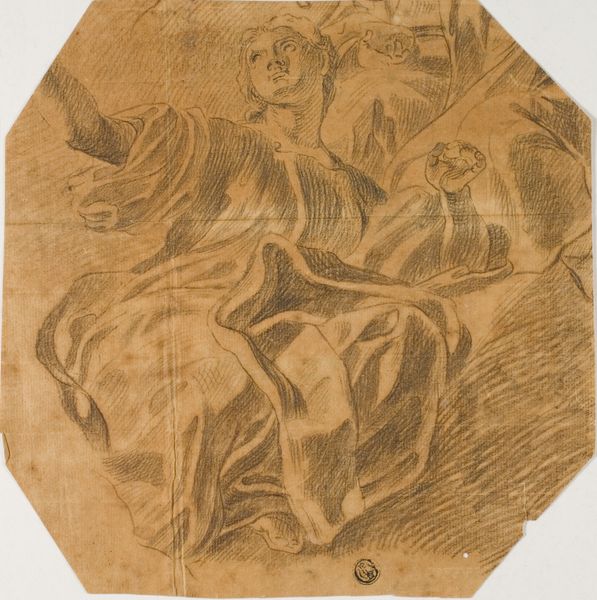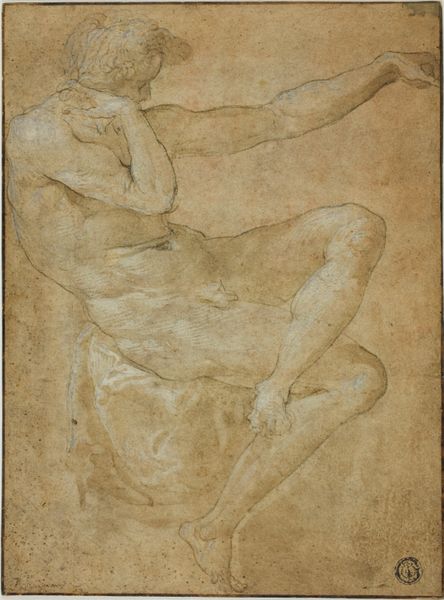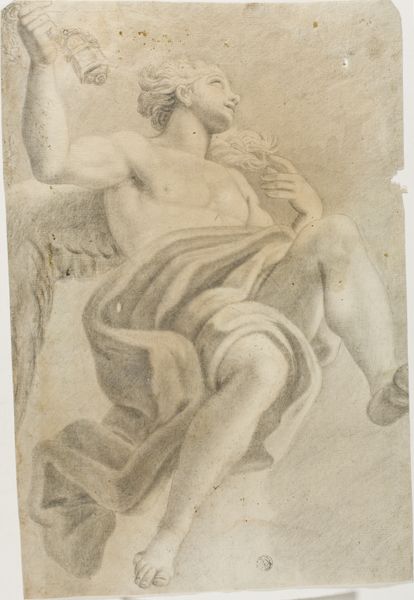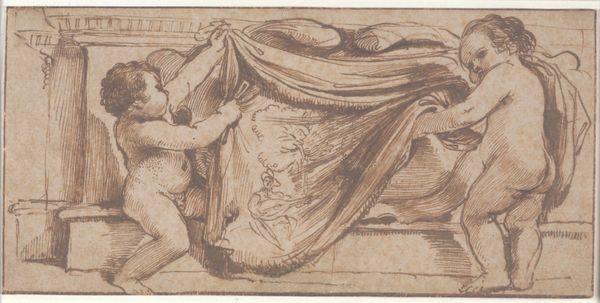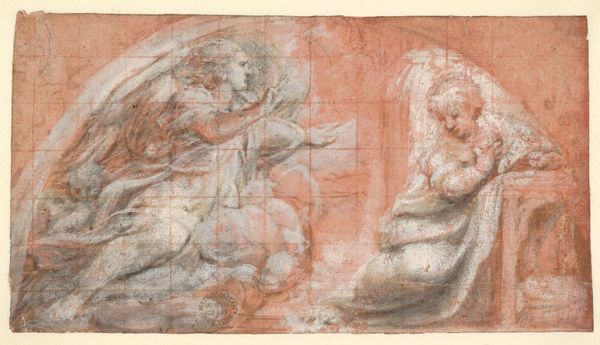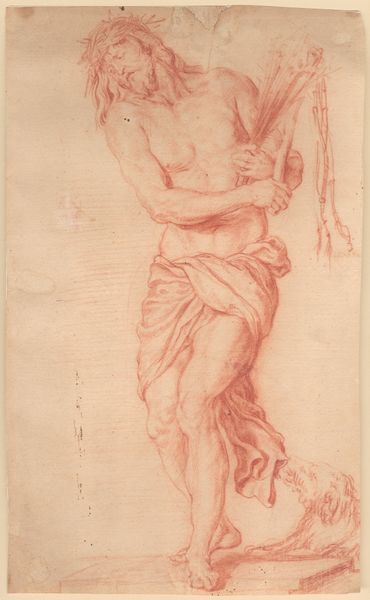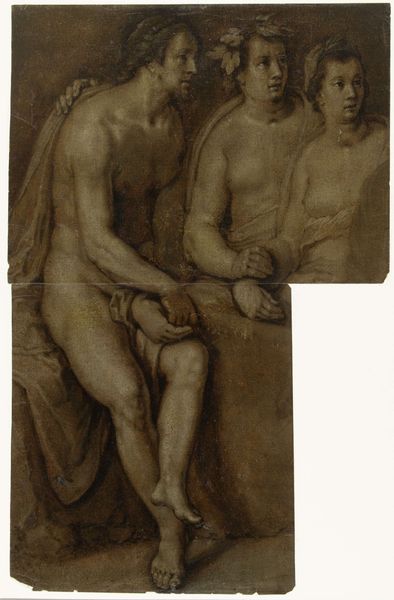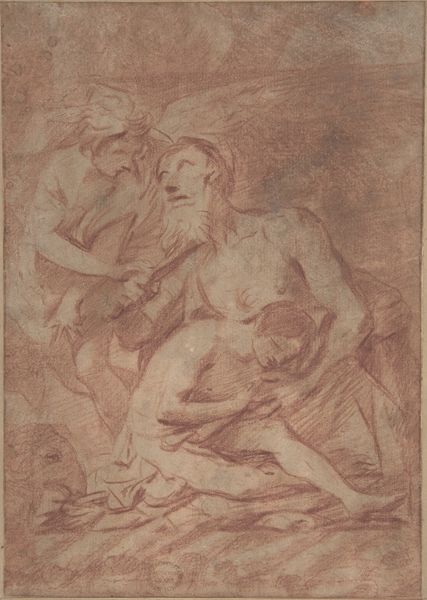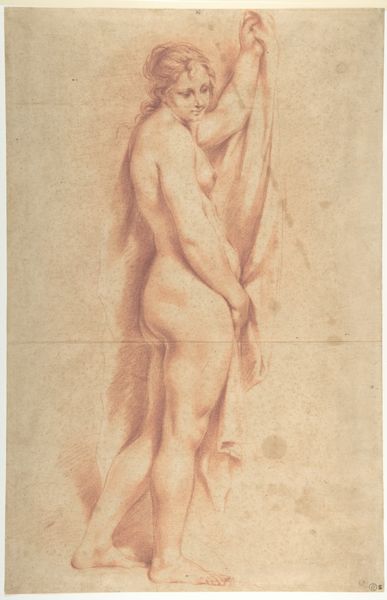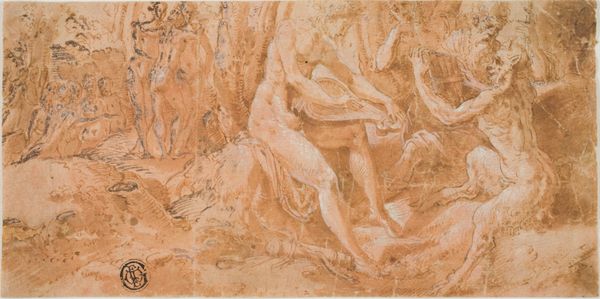
drawing, paper, chalk
#
drawing
#
charcoal drawing
#
figuration
#
paper
#
11_renaissance
#
chalk
#
history-painting
#
academic-art
#
italian-renaissance
#
nude
Dimensions: 217 × 263 mm
Copyright: Public Domain
Editor: So, this is Antonio da Correggio's "Foreshortened Angel," a drawing in chalk and charcoal on paper, dating from the 1520s. The figure, kind of floating and nude, it's got this relaxed, almost sleepy quality to it. How do you interpret this work, especially within the context of the Italian Renaissance? Curator: What strikes me is the use of the nude figure, and its inherent political implications when read through a modern, intersectional lens. The male nude, particularly in the Renaissance, often served as a vehicle for exploring ideas of idealized beauty and power. However, these concepts of "ideal" often excluded marginalized bodies. Considering whose bodies are rendered and whose are erased allows us to unpack the narratives being promoted and the silences perpetuated by such works. Editor: That's fascinating. So you're saying that the Renaissance focus on the ideal form also had an exclusionary side? Curator: Precisely. And if we consider this angel as a messenger—whose message is it carrying, and for whom? Is this divinity accessible to everyone, or is it mediated through certain privileged bodies and social structures? Further, it's crucial to investigate whether artistic choices are promoting—consciously or not—specific gendered or racial ideologies. Do you notice how the pose could suggest vulnerability? Editor: I hadn't thought of it like that, but I see what you mean about vulnerability. So, by examining the visual language and social context, we can challenge these Renaissance ideals, maybe even understand how they continue to influence our contemporary perception of beauty and power? Curator: Absolutely! This drawing isn't just an aesthetic object; it’s a cultural artifact reflecting complex power dynamics of its time, with ramifications that resonate even today. The figure becomes less an image of serene beauty and more of a loaded signifier, and one with a lot to unpack! Editor: This perspective is totally new for me. I guess art really is a reflection of the times, with a lasting impact, huh? Curator: Exactly. By looking closely at art history through these intersectional lenses, we start seeing who has been included and excluded and why.
Comments
No comments
Be the first to comment and join the conversation on the ultimate creative platform.

